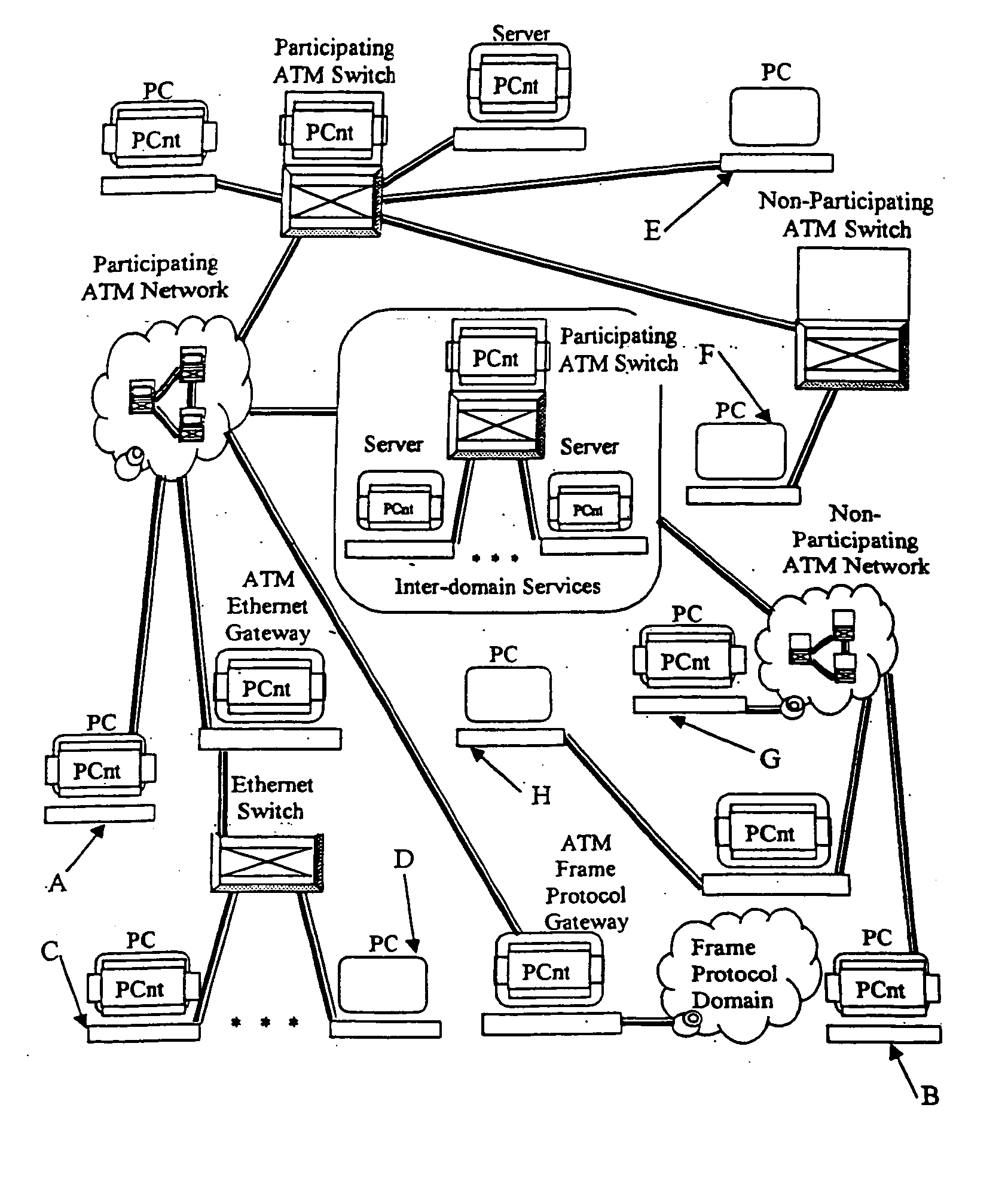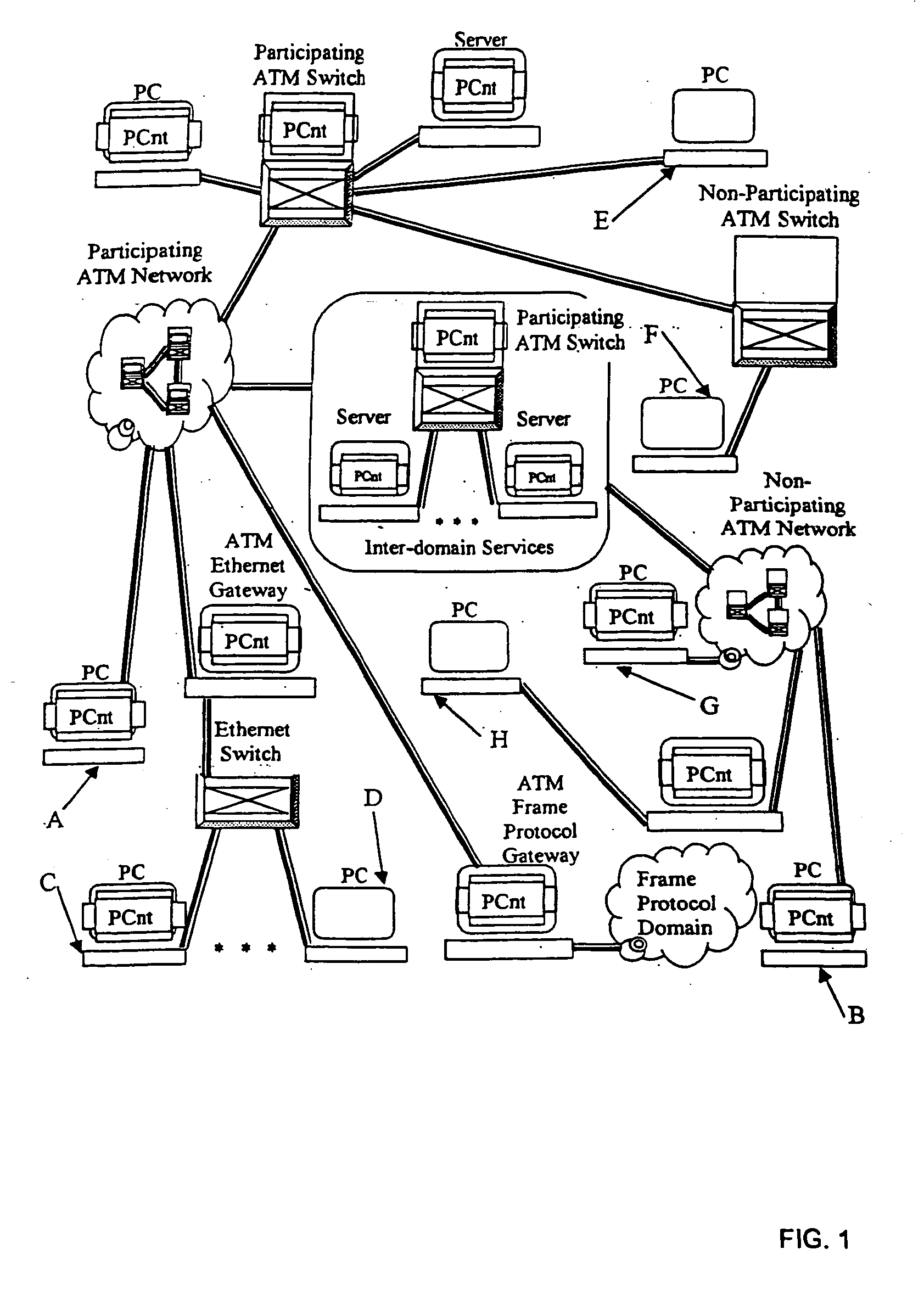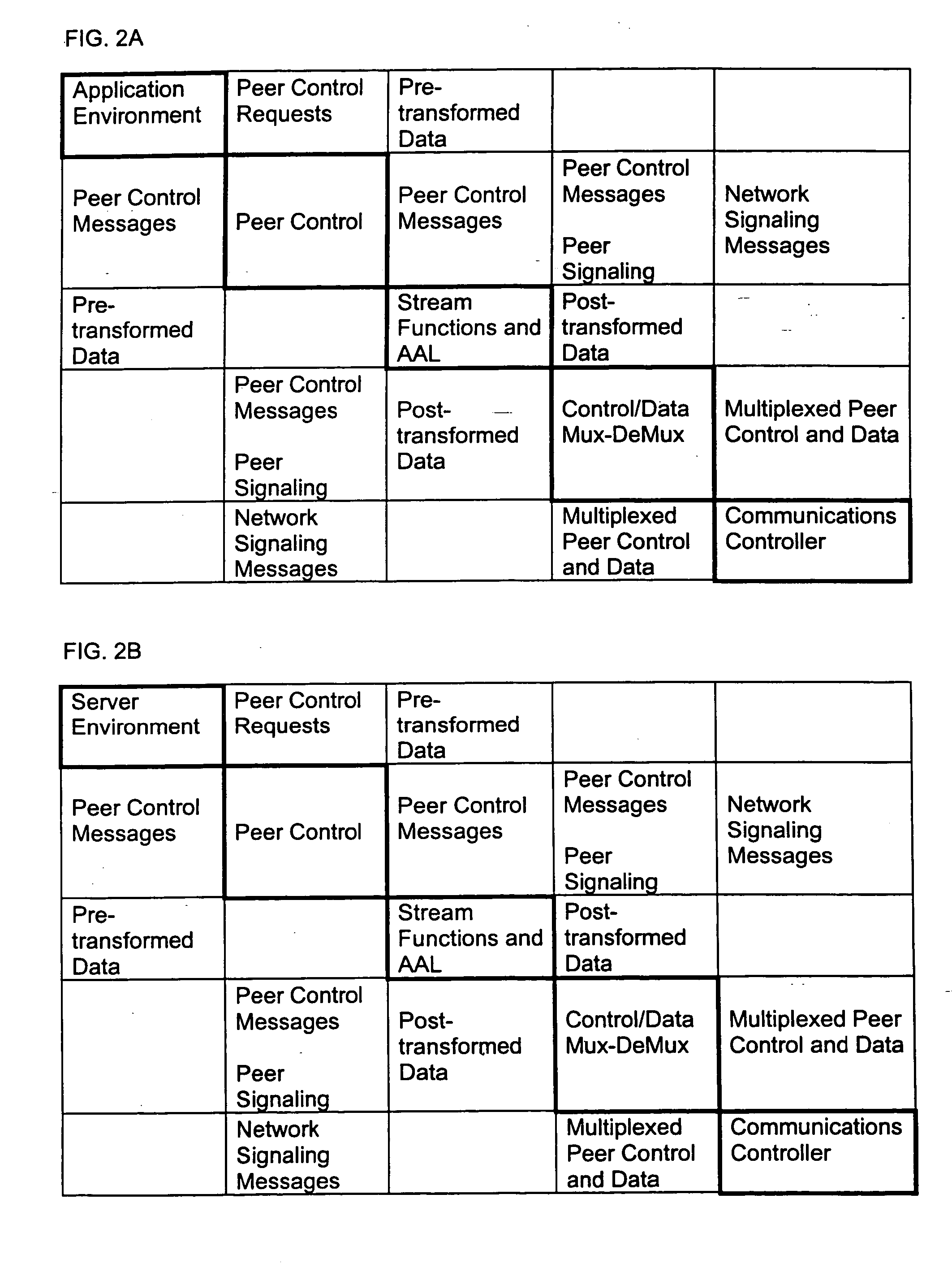System and method for providing peer-oriented control of telecommunication services
a technology of peer-oriented control and telecommunication services, applied in the field of telecommunications, can solve the problems of large, complex companies usually can't react fast enough, and many of the savings and benefits of cheaper bandwidth are not realized by users, and the current explosion of technology, products, and variations for their strategic and tactical use was not fully foreseen or understood
- Summary
- Abstract
- Description
- Claims
- Application Information
AI Technical Summary
Benefits of technology
Problems solved by technology
Method used
Image
Examples
Embodiment Construction
In one aspect, the present invention is a method for providing peer-oriented control of a telecommunications and data networking-based collaborative service. The present invention is concerned with the structure of an application level or “logical level” control mechanism for communication services used in support of various peer-oriented types of applications. The present invention is orthogonal to the underlying native control mechanisms of the network being used. This capability allows application developers to use network services as components of their applications with minimal concern for the implementation of those services.
The target platform for this infrastructure is based on cell and packet based networks utilizing a virtual circuit type implementation mechanism, although implementation over a datagram type implementation mechanism or other mechanisms is possible. The present invention focuses on the Asynchronous Transfer Mode (ATM) communications platform although it ...
PUM
 Login to View More
Login to View More Abstract
Description
Claims
Application Information
 Login to View More
Login to View More - R&D
- Intellectual Property
- Life Sciences
- Materials
- Tech Scout
- Unparalleled Data Quality
- Higher Quality Content
- 60% Fewer Hallucinations
Browse by: Latest US Patents, China's latest patents, Technical Efficacy Thesaurus, Application Domain, Technology Topic, Popular Technical Reports.
© 2025 PatSnap. All rights reserved.Legal|Privacy policy|Modern Slavery Act Transparency Statement|Sitemap|About US| Contact US: help@patsnap.com



